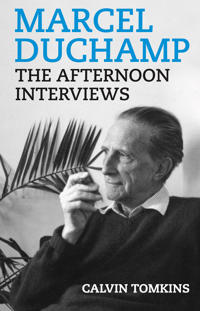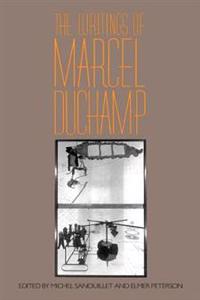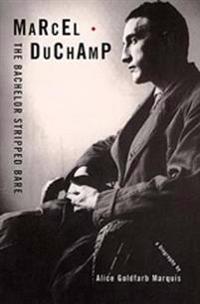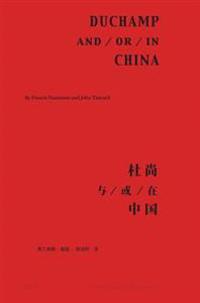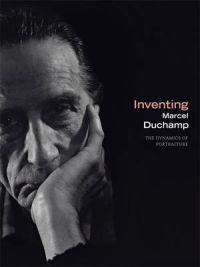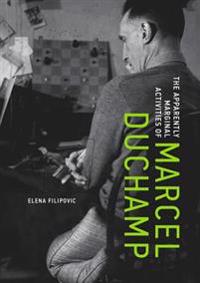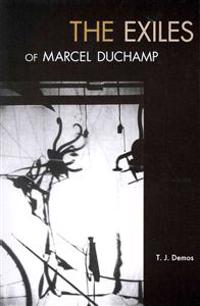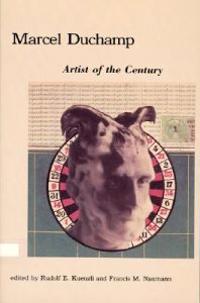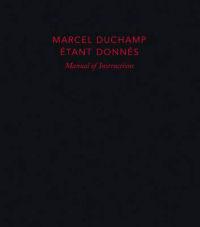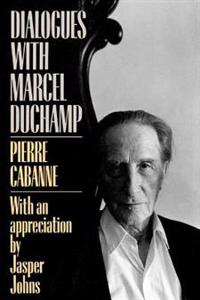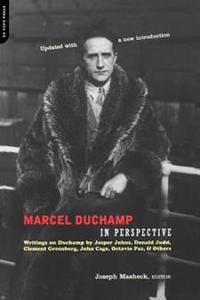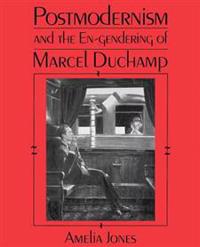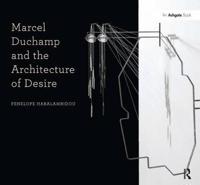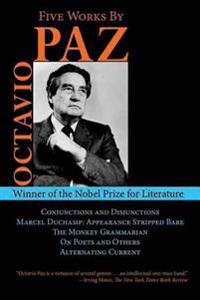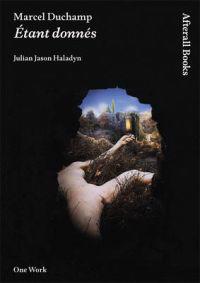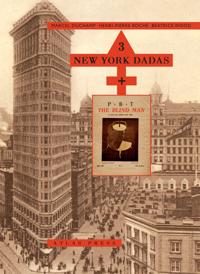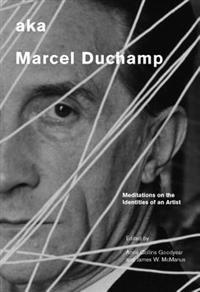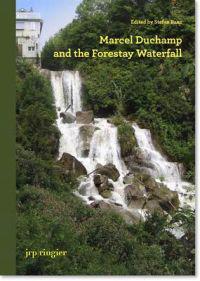Marcel Duchamp (Pocket)
avMarcel Duchamp, Calvin Tomkins, Marcel Duchamp
ISBN: 9781936440399 - UTGIVEN: 201302In 1964, Calvin Tomkins spent a number of afternoons interviewing Marcel Duchamp in his apartment on West 10th Street in New York. Casual yet insightful, Duchamp reveals himself as a man and an artist whose playful principles toward living freed him to make art that was as unpredictable, complex, an[...]
The Writings of Marcel Duchamp (Häftad)
avMarcel Duchamp, Michel Sanouillet, Elmer Peterson
ISBN: 9780306803413 - UTGIVEN: 1989-03In the twenties, Surrealists proclaimed that words had stopped playing around and had begun to make love. Nowhere is this more apparent than in the writings of Marcel Duchamp, who fashioned some of the more joyous and ingenious couplings and uncouplings in modern art. This collection beings togethe[...]
Marcel Duchamp & Vitaly Halberstadt (Inbunden)
avMarcel (CON) Duchamp, Ernst Strouhal, Marcel (CON) Duchamp
ISBN: 9783869843278 - UTGIVEN: 2013-04In 1932, Marcel Duchamp published "Opposition and Sister Squares Are Reconciled," a collaboration with chess champion Vitaly Halberstadt on endgames in chess. Ernst Strouhal's illustrated study approaches this volume as an "almost utopian treatise on chess endgames" and as a trilingual artist's book[...]
Marchel Duchamp the Bachelor Stripped Bare (Inbunden)
avMarcel Duchamp, Alice Goldfarb Marquis, Marcel Duchamp
ISBN: 9780878466443 - UTGIVEN: 200209Marcel Duchamp (Inbunden)
avMarcel (CON) Duchamp, Jeff Wall, Michael (INT) Taylor
ISBN: 9783869845005 - UTGIVEN: 2014-11Duchamp And/Or/In China (Häftad)
avPaula Tsai, Laura Tucker, Marcel Duchamp
ISBN: 9787510060137 - UTGIVEN: 2014-04"Duchamp and/or/in China" investigates the impact of Duchamp on contemporary Chinese art. It includes a pull-out section of his best-known works. Among the artists included here are Ai Weiwei, Cai Yuan + Xi Jian Jun, Huang Yong Ping, Zhao Zhao and Zheng Guogu.[...]
Marcel Duchamp på radio : Georges Charbonniers intervjuer med Marcel Duchamp i franska radion 1960-1961 (Häftad)
ISBN: 9789197050586 - UTGIVEN: 2009-04-01Sex radiointervjuer med Marcel Duchamp från 1960-61 om konsten, konstnärererna, historien, språket, readymades, dadaismen, surrealismen och konstmarknaden. Intervjuare: Georges Charbonnier, initierad kulturjournalist som bidrar med sina erfarenheter till ett spirituellt samtal.[...]
Inventing Marcel Duchamp (Inbunden)
avAnne Collins (EDT) Goodyear, James W. (EDT) Mcmanus, Janine A. (CON) Mileaf
ISBN: 9780262013000 - UTGIVEN: 2009-04One of the most influential artists of the twentieth century, Marcel Duchamp (1887-1968) was a master of self-invention who carefully regulated the image he projected through self-portraiture and through his collaboration with those who portrayed him. During his long career, Duchamp recast accepted [...]
The Apparently Marginal Activities of Marcel Duchamp
ISBN: 9780262034821 - UTGIVEN: 2016-11This groundbreaking and richly illustrated book tells a new story of the twentieth century's most influential artist, recounted not so much through his artwork as through his "non-art" work. Marcel Duchamp is largely understood in critical and popular discourse in terms of the objects he produced, w[...]
The Exiles of Marcel Duchamp (Pocket)
avT. J. Demos
ISBN: 9780262518116 - UTGIVEN: 2012-09Marcel Duchamp was a famous expatriate, a wanderer, living and working in Paris, New York, and Buenos Aires and escaping from each in turn. But exile, argues T. J. Demos in this innovative reading, is more than a fact in Duchamp's biography. Exile--in the artist's own words, a "spirit of expatriatio[...]
Marcel Duchamp (Häftad)
avGeorge Baird
ISBN: 9780262610728 - UTGIVEN: 199106One hundred years after his birth, Marcel Duchamp remains an enigma; no other artist, perhaps, has produced so varied a group of masterpieces in so short a span of time. These eleven illustrated essays explore the structure and meaning of Duchamp's work as part of an ongoing critical enterprise that[...]
Etant Donnes (Inbunden)
avMarcel Duchamp, Anne D'Harnoncourt, Michael R. Taylor
ISBN: 9780300149807 - UTGIVEN: 200908Out of print for a number of years, this facsimile of Marcel Duchamp's "Manual of Instructions" was prepared by the artist for the disassembly of Etant donnes in his New York studio and its reassembly at the Philadelphia Museum of Art. First published more than twenty years ago, the manual has had f[...]
Dialogues with Marcel Duchamp (Häftad)
avPierre Cabanne
ISBN: 9780306803031 - UTGIVEN: 198708Marcel Duchamp, one of this centurys pioneer artists, moved his work through the retinal boundaries which had been established with impressionism into t field with impressionism into t field where language, thought and vision act upon one another, There it changed form through a complex interplay of[...]
Marcel Duchamp (Pocket)
avDawn Ades, Neil Cox, David Hopkins
ISBN: 9780500203224 - UTGIVEN: 1999-06Genius, anti-artist, charlatan, guru, imposter? Since 1914 Marcel Duchamp has been called all these. Arousing passion and controversy, he has exerted a great influence on art, whose very nature he challenged and redefined as concept rather than product by questioning its traditionally privileged opt[...]
Postmodernism and the En-Gendering of Marcel Duchamp (Pocket)
avAmelia Jones
ISBN: 9780521456548 - UTGIVEN: 1995-07A critical analysis of postmodernism in the visual arts since the 1960s, this book focuses primarily on American texts that reference and construct Marcel Duchamp as the originator of postmodern art. Amelia Jones contends that Duchamp, through his ?readymades?, (the standard terms used to describe D[...]
Marcel Duchamp and the Architecture of Desire (Häftad)
ISBN: 9781409443452 - UTGIVEN: 2013-12While much has been written on Marcel Duchamp - one of the twentieth century's most beguiling artists - the subject of his flirtation with architecture seems to have been largely overlooked. Yet, in the carefully arranged plans and sections organising the blueprint of desire in the Large Glass, his [...]
Five Works by Octavio Paz: Conjunctions and Disjunctions / Marcel Duchamp: Appearance Stripped Bare / The Monkey Grammarian / On Poets and Others (Inbunden)
avBritt Ulstrup Engelsen
ISBN: 9781611453119 - UTGIVEN: 201207One of the great thinkers of the twentieth century has some of his finest art, culture and literary criticism collected here for the first time. A Nobel laureate, Octavio Paz s lucid poetry has been translated by such luminaries as Mark Strand, Elizabeth Bishop, and Samuel Beckett, while his work as[...]
Marcel Duchamp
ISBN: 9781628723755 - UTGIVEN: 2014-08Octavio Paz claims in this essential work that the two painters who had the greatest influence on the twentieth century were Pablo Picasso and Marcel Duchamp. If that conjunction surprises at first, Paz makes a convincing case with his analysis and by contrasting the two artists. "I have linked thei[...]
Marcel Duchamp (Häftad)
avJulian Jason Haladyn
ISBN: 9781846380594 - UTGIVEN: 201002Following Marcel Duchamp's death in 1968, the Philadelphia Museum of Art stunned the art world by unveiling a project on which he had been working secretly for twenty years, long after he had supposedly given up art for chess. Installed by the museum curators with the assistance of Duchamp's widow T[...]
Marcel Duchamp
ISBN: 9781861892621 - UTGIVEN: 2006-04"Marcel Duchamp", by Paris-based curator and art critic Caroline Cros, is a new account of one of the most important cultural figures of modern times. Drawing on the artist's correspondence and interviews, she details Duchamp's life-long belief in chance and coincidence, and how that led him to let [...]
Marcel Duchamp (Inbunden)
avJennifer Gough-Cooper, Jacques Caumont, Andre (ILT) Raffray
ISBN: 9781900565158 - UTGIVEN: 1999-12A must for Duchamp devotees everywhere! This little introduction to the life and works of Marcel Duchamp was originally published to accompany a Duchamp retrospective at the Pompidou Centre in Paris. Modelled on a children?s book it contains 12 dead-pan full-page colour illustrations of events in D[...]
3 New York Dadas and the Blindman (Inbunden)
avMarcel Duchamp, Henri-Pierre Roche, Beatrice Wood
ISBN: 9781900565431 - UTGIVEN: 2012-03Aka Marcel Duchamp: Meditations on the Identities of an Artist (Inbunden)
avAnne Collins Goodyear, James W. McManus
ISBN: 9781935623151 - UTGIVEN: 2014-11"aka Marcel Duchamp" is an anthology of recent essays by leading scholars on Marcel Duchamp, arguably the most influential artist of the twentieth century. With scholarship addressing the full range of Duchamp's career, these papers examine how Duchamp's influence grew and impressed itself upon his [...]

